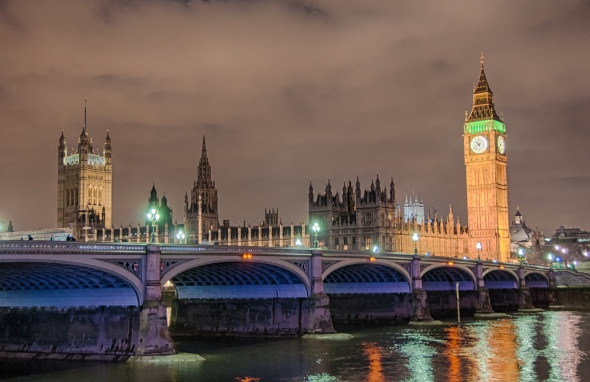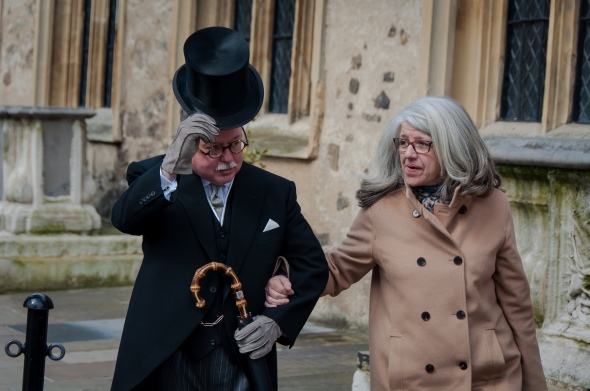Brooklyn Bridge – New York
Brooklyn – 2015
The Brooklyn Bridge is a hybrid cable-stayed/suspension bridge which connects the boroughs of Manhattan and Brooklyn over the East River. Completed in 1883, it is one of the oldest of either type bridge in the United States.When the Brooklyn Bridge first opened, it cost a penny to cross by foot, 5 cents for a horse and rider and 10 cents for a horse and wagon. Farm animals were allowed at a price of 5 cents per cow and 2 cents per sheep or hog. It is now free for all beasts and vehicles to cross.
The Grand Central Terminal Clock – New York
Grand Central Terminal, NY
The Grand Central Terminal Clock, the most iconic feature of Grand Central Terminal, is a four-faced brass clock on top of the central information booth. The clock was designed by Henry Bedford for the Connecticut clock crafting company Seth Thomas. The clock was completed in 1913 to honor the opening of the Grand Central Terminal. The clock also happened to be completed the same year as the 100th birthday of the Seth Thomas Company.
Each of the four clock faces is made from opalescent glass (now often called opal glass or milk glass) though urban legend misconstrues this fact and claims that the faces are mistakingly made of “opal”. The clock is valued in the tens of millions of dollars.
The clock is set every second by the atomic clock in Naval Observatory in Bethesda, Maryland. This means that the clock is accurate to within one second every 1,400,000 years.
The large American flag behind the clock was hung a few days after the September 11th attacks on the World Trade Center.
Palace of Westminster
London – 2015
Finishing up London 2015 pic series with one more shot of the Palace of Westminster, Elizabeth Tower/Big Ben at night.
Humans of London Tower
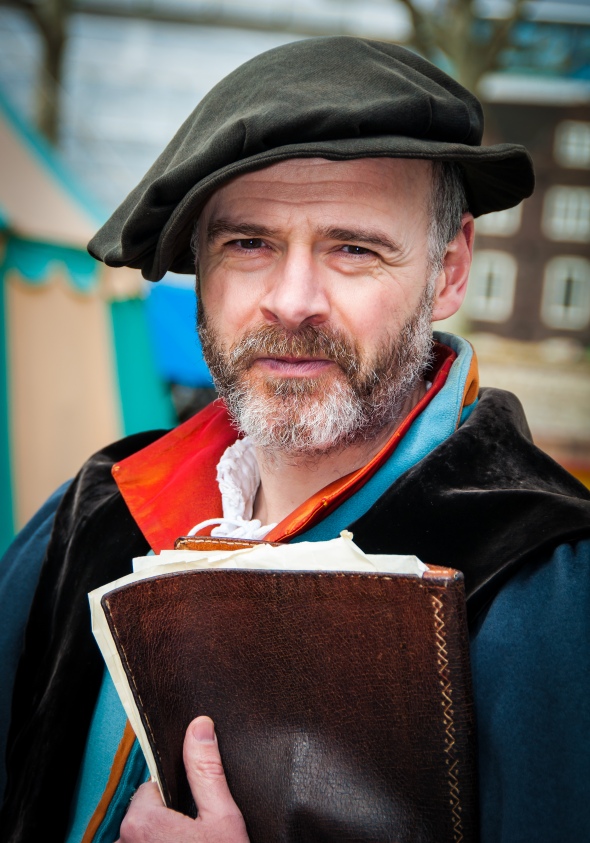 London Tower – 2015
London Tower – 2015
Finishing of my London series with a short “Humans of London Tower” set.
Tower Bridge from Tower of London
 View Across the Thames
View Across the Thames
The Tower of London (“Her Majesty’s Royal Palace and Fortress of the Tower of London“), located on the banks of the river Thames in central London, was first built in 1066 as part of the Norman conquest of England, the 11th-century invasion and occupation of England by Norman, Breton, and French soldiers led by Duke William II (William the Conqueror) of Normandy.
The White Tower, which gives the entire castle its name, was built by William in 1078, and was a resented symbol of oppression by the new ruling elite. Throughout the centuries the castle had been besieged multiple times, as controlling it was critical to controlling the country.
This view from outside the White Tower shows the Tower Bridge, a combined draw bridge and suspension bridge across the Thames which was built in 1886–1894.
Mind The Gap – London
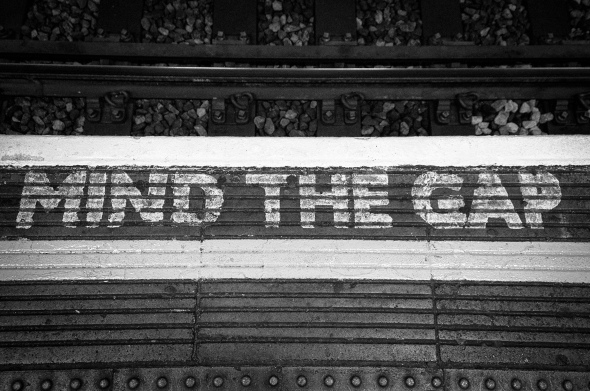 London Underground
London Underground
Queens Guard – London
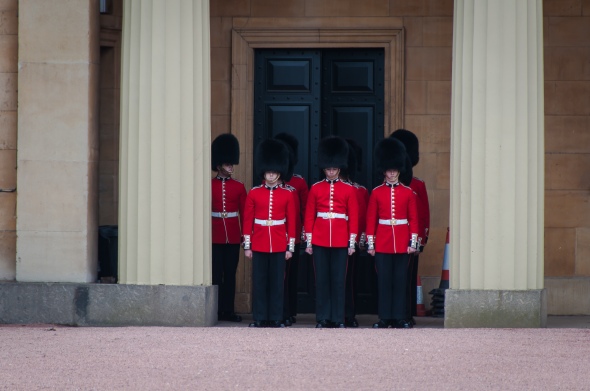 Buckingham Palace
Buckingham Palace
London Underground
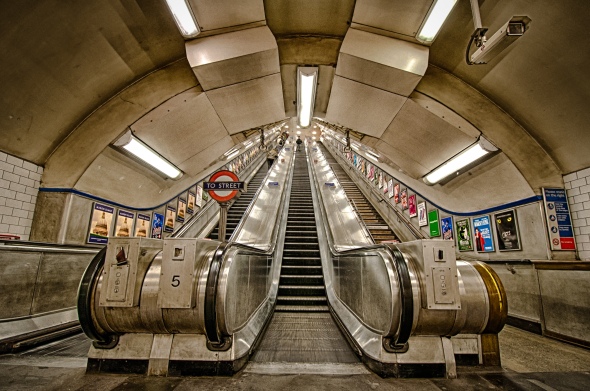 “The Tube”
“The Tube”
Wide angle shot of the London Underground (aka the Tube), which was the world’s first underground railway, opened in 1863. The nickname “The Tube” comes from the small, roughly circular tunnels which were dug to lay the tracks.
Elizabeth Tower (Big Ben)
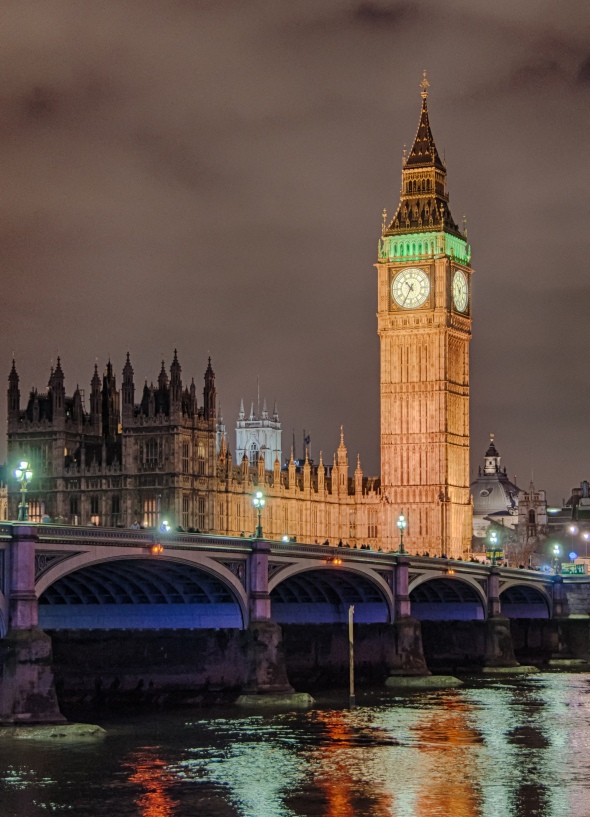 Palace of Westminster
Palace of Westminster
The Palace of Westminster, meeting place Parliament of the United Kingdom. The palace was built in the eleventh century. Most of the original medieval structures were destroyed in fires. The current design was by architect Charles Barry, in the English Perpendicular Gothic style of the 14th-16th centuries. Can you see Big Ben? No You can’t! Big Ben is the BELL in the tower, not the tower…the tower is called ” Elizabeth Tower”, named in 2012 to celebrate the Diamond Jubilee of Elizabeth II (previously just called the Clock Tower).
Hafenkran (Harbour Crane), Zürich, Switzerland
Hafenkran
The Zurich Transit Maritime Art installation “Hafenkran” (harbour crane), was a 90 ton rusting crane which operated for more the 50 years in the port of Rostock in northern Germany, was installed from 2014-2015 on the banks of the river Limmat in Zurich. Its purpose was to “bring a feeling of the sea – and a sense of freedom – to landlocked Zurich”. Is (was) it art? Still being debated.
Oepfelchammer, Zürich
 Oldest, originally preserved wine tavern in Zürich.
Oldest, originally preserved wine tavern in Zürich.
The original building was built in 1357 as a patrician house (noble medieval citizen), and didn’t see commercial activity until the 17th century, when a bakery was built. Various families operated bakeries there until 1801, when baker Hans Kaspar Denzl got a pub-license and added this wine tavern.
The tavern soon became a hotspot for intellectuals, poets, craftsmen, city officials, artists, and students to meet and discuss politics and religion during all night wine-fueled animated debates. This was once a haunt of Gottfried Keller, a 19th-century novelist and poet and one of Zurich’s most famous names.
House rules state that if you are able to climb into the rafters, span two rafters, and, while hanging upside down, can drink a glass of wine without spilling a drop, then you too may carve your initials into the rafters. I haven’t tried (yet).
Dusk and Reflections on Lake Hallstatt
 Lake Hallstatt, Austria
Lake Hallstatt, Austria
This is my parting shot of my series on the charming and photogenic village of Hallstatt, Austria. There is no more tranquil and idyllic setting to share good times (and cold beers) with lifelong best friends!
Hallstatt Austria from the Salt Mines
 Alpine Panorama
Alpine Panorama
This is the breathtaking view of Hallstatt, Lake Hallstatt, and the surrounding Austrian Alps as seen from the nearby entrance to the oldest salt mines in the world. From this view it is easy to understand why before 1900 Hallstatt, one of the first regions of human settlement, was only accessible by boat or narrow trail.
Hallstatt, Austria
Picturesque Alpine Village and UNESCO heritage site
Hallstatt is an idyllic and unbelievably charming Austrian village in the Salzkammergut region of Austria. This tiny town consists of traditional 16th-century alpine homes built on a narrow strip of land nestled between the adjacent towering Alps and the beautifully tranquil Lake Hallstatt.
Hallstatt is known for its salt mines, which are the oldest in the world and date back to prehistoric times. The mines have been worked since the Neolithic period (Late Stone age, 7 to 10 thousand years ago!), and flourished during the Bronze and Iron ages. The early Iron age is actually known as The Hallstatt Period (800 to 400 BC) in Europe.
Hallstatt is so spectacular that in 2012 a Chinese mining company built a $940 million “clone” of Hallstatt in the Guangdong region of Southern China. I hear that the views through the smoggy Chinese industrial heartland are not quite as spectacular as the original.
Oude Kerk, Amsterdam
Vater-Müller organ, Oude Kerk Amsterdam
The Oude Kerk (“old church”) is the oldest building in Amsterdam, founded 1213 (>800 year old!) and consecrated in 1306. The wooden roof is the largest medieval wooden vault in Europe, and the Estonian planks (1390) claim some of the best acoustics in Europe. Rembrandt was a parishioner the Oude Kerk, his children were all baptized here, and his wife was buried here in 1642. It is the only building in Amsterdam that remains in its original state since Rembrandt walked its halls.
Above is the Vater-Müller organ, built in 1724 and regarded as one of the finest Baroque organs in Europe. It was acknowledged by the church Commissioners as “perfect.” Click here to see an interesting demonstration of the organ accompanied by a Taiko, a traditional Japanese drum.
German WWII Atlantikwall Pillbox
Nazi Pillbox, Scheveningen Beach, The Hague, Netherlands
When I was a kid living in Holland in ’75 and ’76 I used to ride my bike to the beach (Scheveningen Beach) with my brother Mike and our friends. Near the end of the ride we passed through extensive sand dunes before we reached the North Sea. At the periphery of the dunes we passed these Nazi German R671 Pillboxes, which are remnants of the German Atlantikwall heavy artillery defense system.
The Atlantikwall was an extensive system of costal defense fortifications built by Hitler and Nazi Germany between 1942 and 1944 along the coast of Europe and Scandinavia which included trenches, gun positions, colossal coastal guns, and thousands of German troops stationed to protect against the anticipated Allied invasion of WWII. They are part of a last generation of static defences built on such a large scale.
In writing this entry I came across a website that visually depicts the Third Reich’s massive defensive line established on the European Western coast. Of special interest to me were the photographs of the intricate tunnel systems built beneath these very structures on this small section of the Dutch coast. I highly encourage you to explore this link (Bunkersite.com) and visit the tunnels and trenches under this and other beaches as well as descriptions of other components of the Third Reich’s Atlantikwall. Start with the gray links on the left of the page. This photo is from my 2014 visit back to Holland.
The Zuiderkerk, Amsterdam (Looking up the Groenburgwal)

Built 1603-1611, the Zuiderkerk (Southern Church) is a 17th-century Dutch Renaissance design Protestant church in the Nieuwmarkt area of Amsterdam. The church bells date back to 1658, and are still rung once a week.
It was rumored that Rembrandt painted his famous Night Watch in the church because his nearby studio and home was too small (likely untrue), however three of his children are buried here.
The French Impressionist painter Claude Monet painted his famous “The Zuiderkerk, Amsterdam (Looking up the Groenburgwal)” from this very location in 1874.
7 Bridges, Amsterdam

























